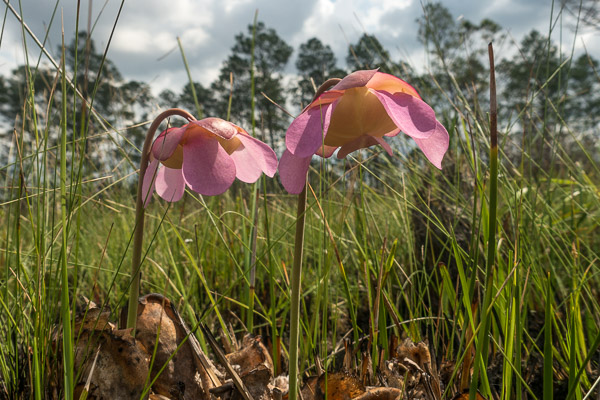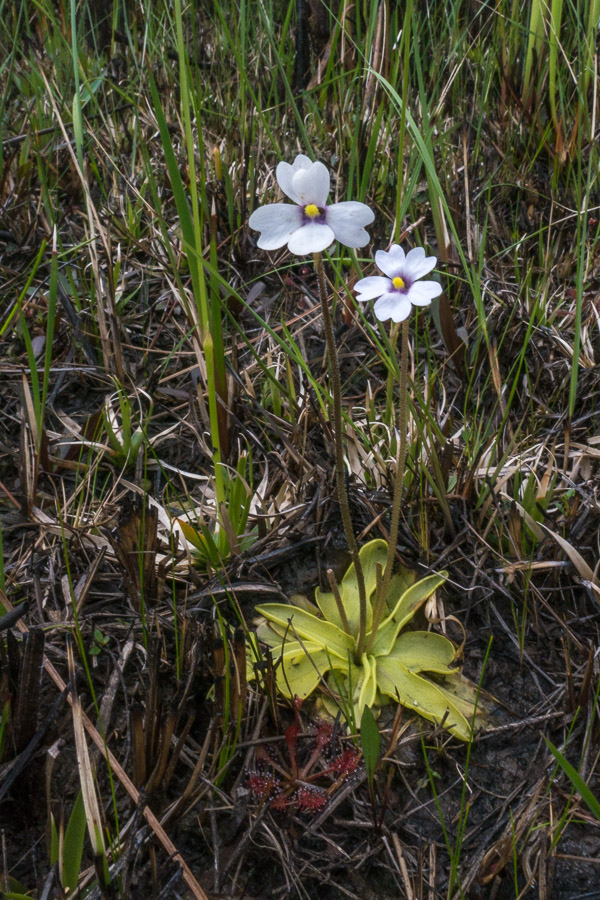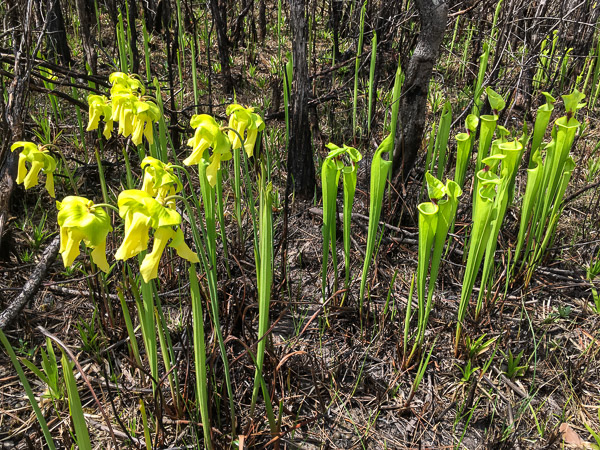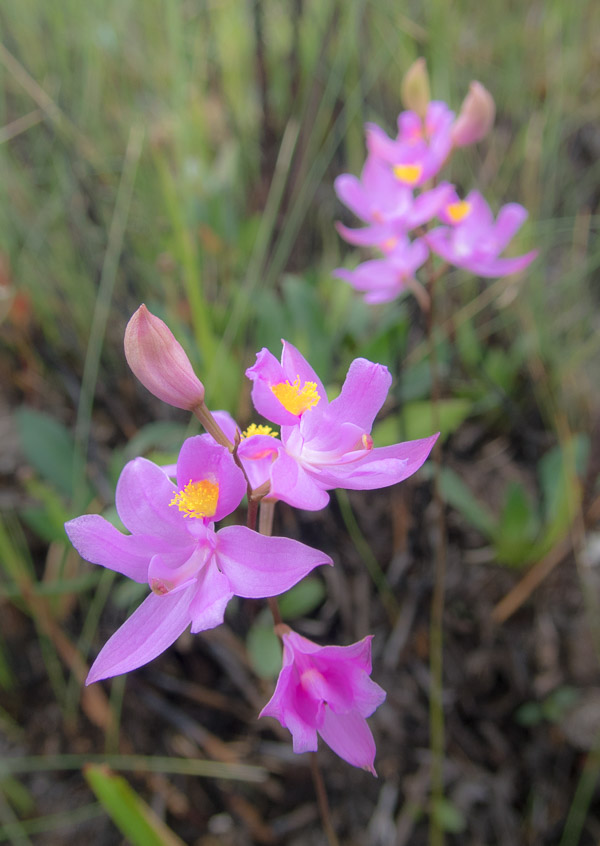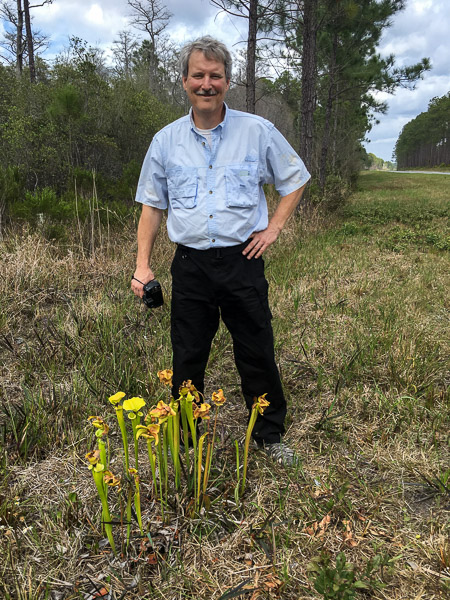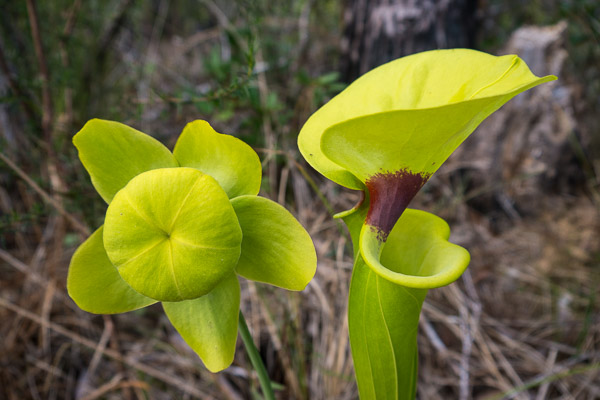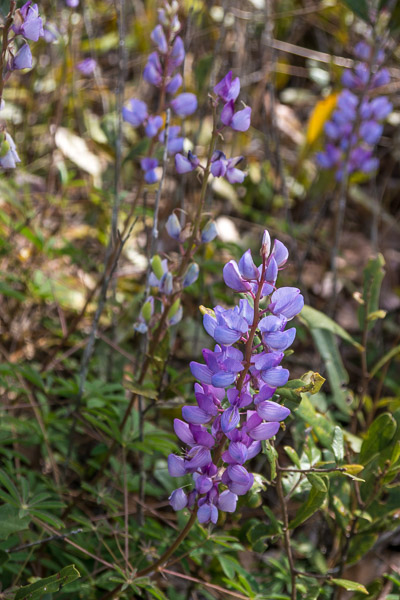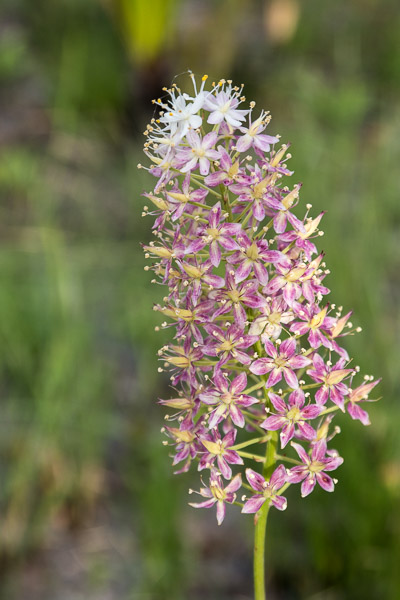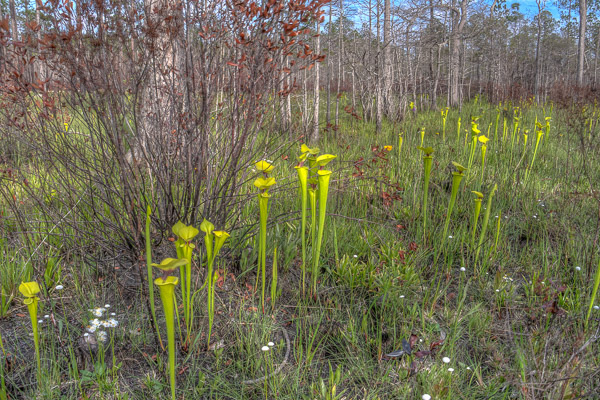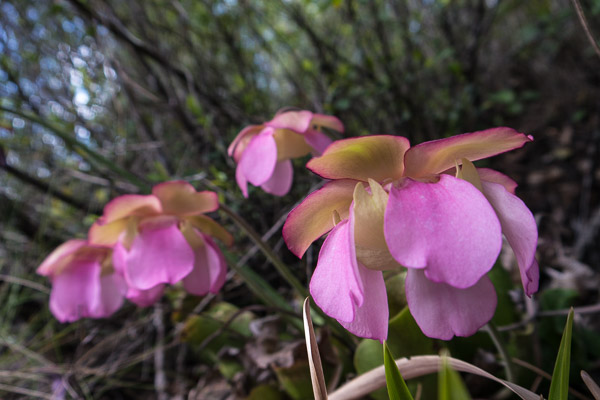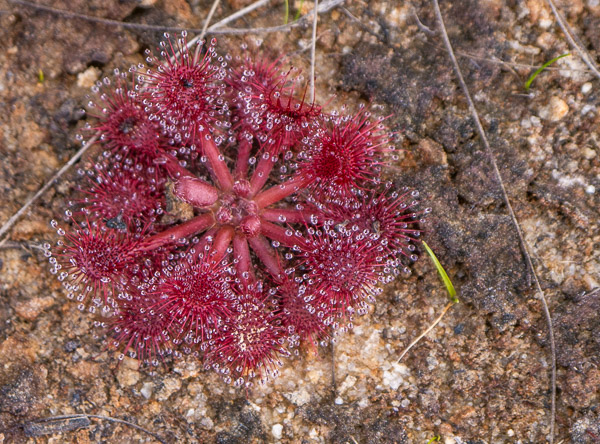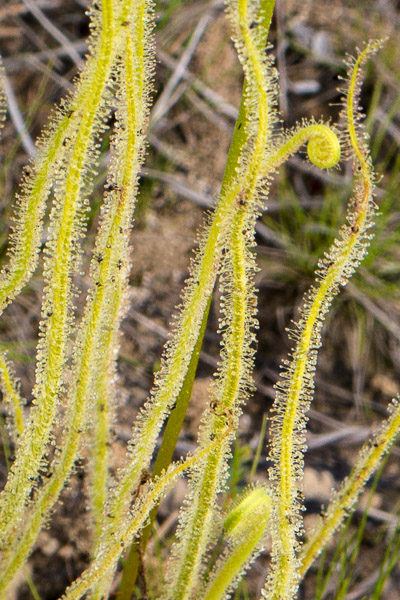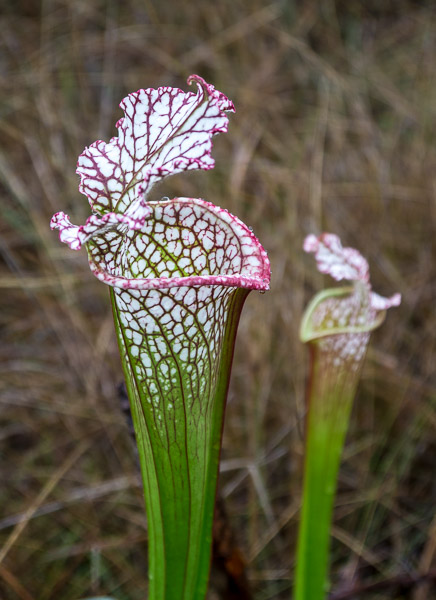The last time I went hunting for Pitcher Plants was 2017. This year I went about two weeks earlier and learned more about their distribution and lifecycles. I visited six sites in all, moving from Florida into Alabama. [Gallery] I saw mostly pitcher plant flowers as I moved west, apparently the flowers emerge days to weeks before the funnel-shaped leaves.
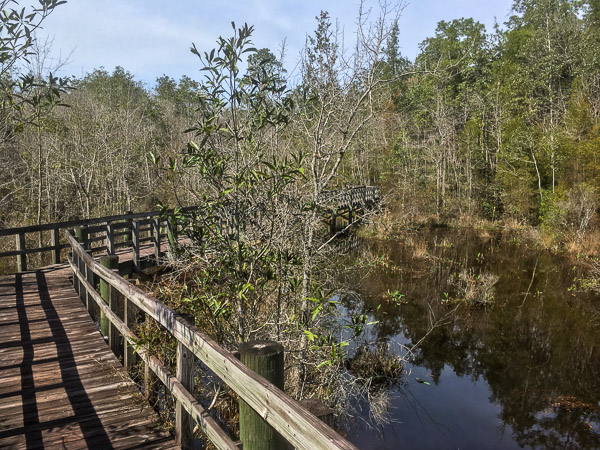
My first stop was Clear Creek Nature Trail (which is actually part of Whiting Field Naval Air Station). They maintain a nice boardwalk so you can walk over and among numerous White-Top Pitcher Plants.
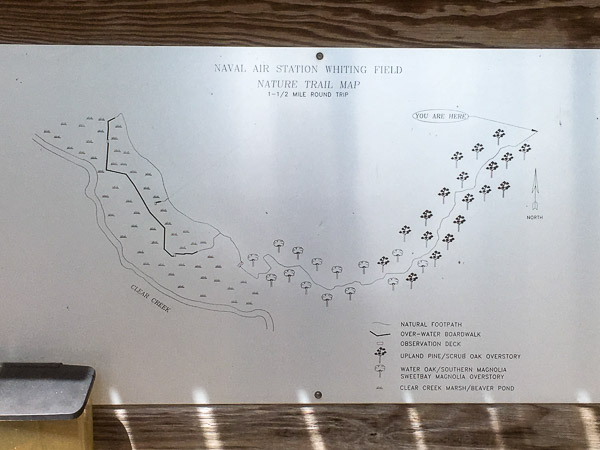
I had not been to this site since 2013, and the plants were just beginning to emerge. I took a few photos of what was there, and caught a cryptic denizen I did not see until I reviewed the photos at home.
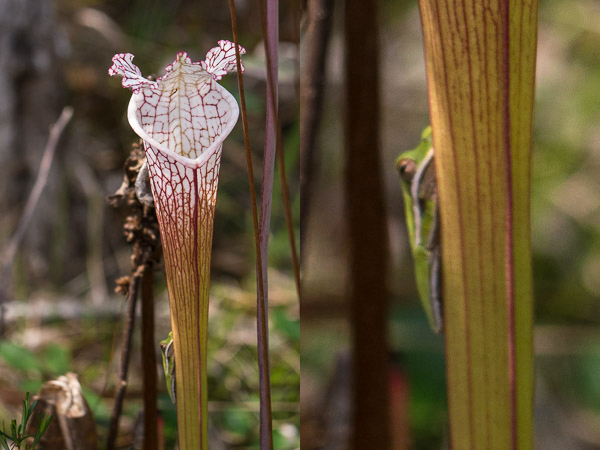
My next stop was nearby, the Yellow River Marsh Preserve. Unfortunately for me (not the preserve) there had been a recent prescribed burn in that area. I could find only one clump of pitcher plants on the perimeter of the small pond where they had been plentiful in the past.

Fortunately I did not have to go far, just a few steps over to the ditches on either side of the local road!
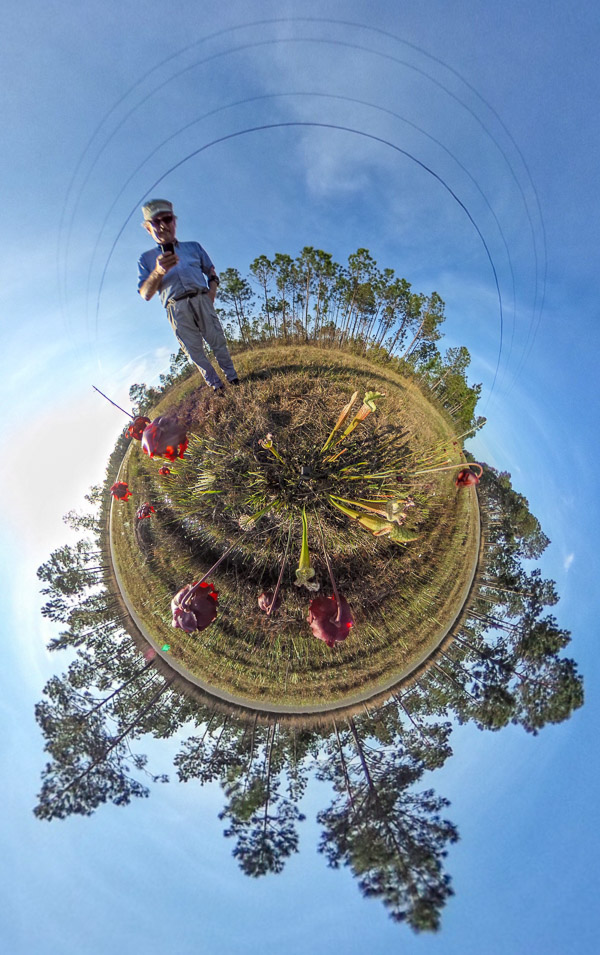
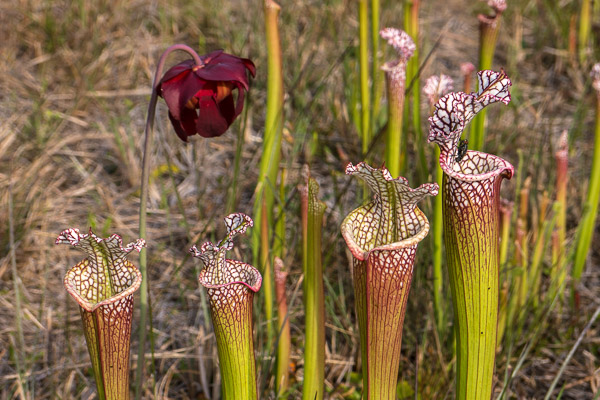
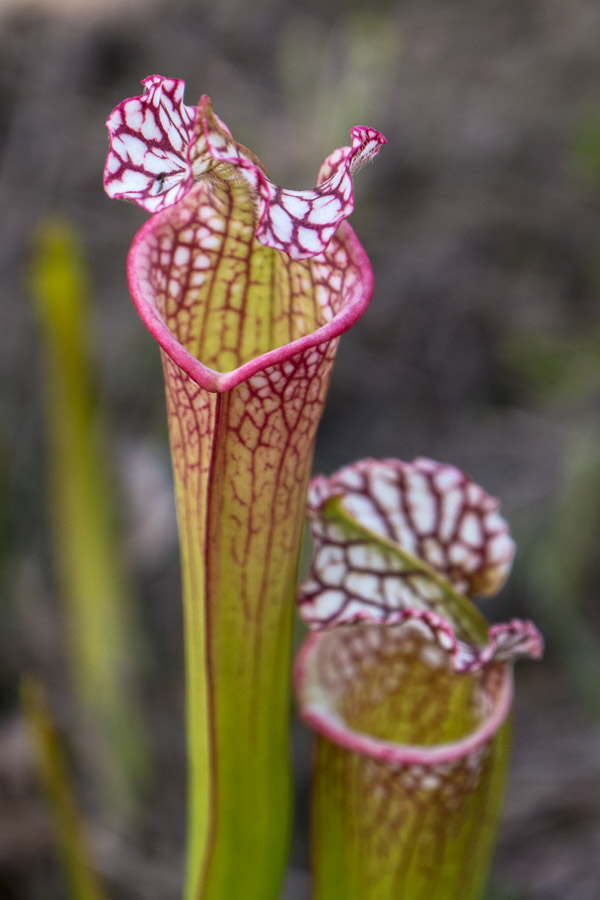
There were also many Sundews present, including the “Threadleaf” species I’d wondered about in the past (saying it looked like a cross between a “sundew and a fern”). Turns out I was half right!
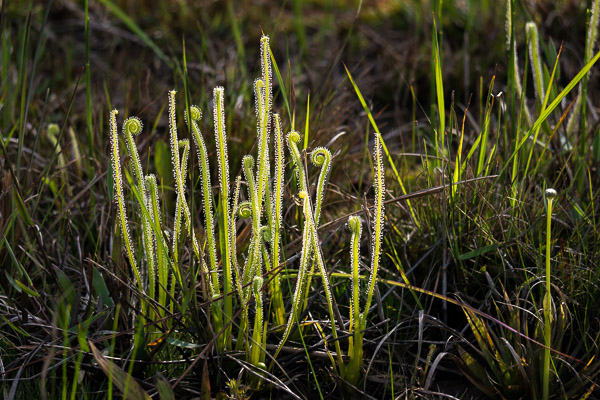
I ended the first day at Tarkiln Bayou Preserve with about an hour of daylight remaining. They had a nice boardwalk and there were many White-Top Pitcher Plants present in one wet area, along with several Grass Pink Orchids!
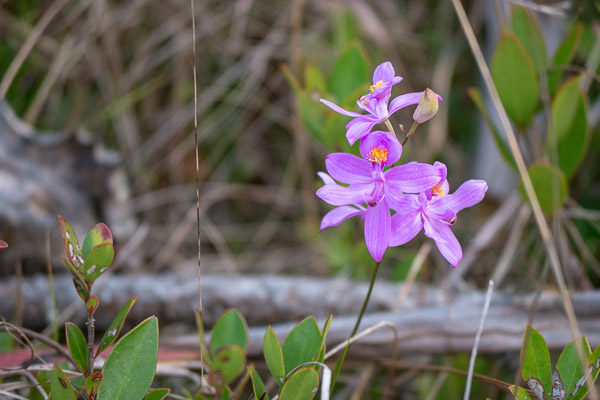
The next day was a bust as far as Pitcher Plants go, but I got a chance to explore two new areas that in a few weeks will probably be full of new growth. The first was Weeks Bay Pitcher Plant Bog with extensive boardwalk over and around a large wetland. There were a few flowers emerging from the straw and lots of Fern Fiddleheads unfurling.
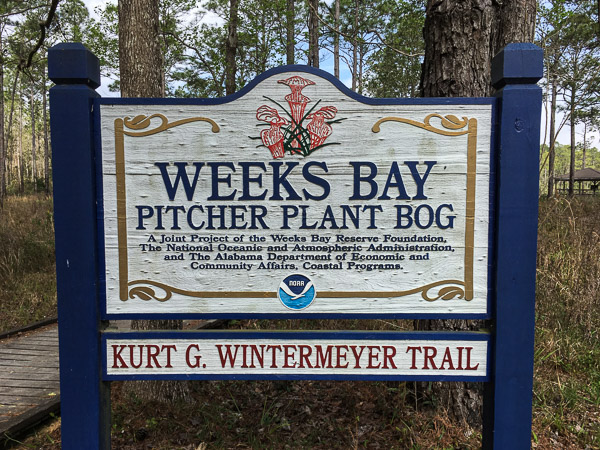
I also caught this Green Anole displaying his throat patch.
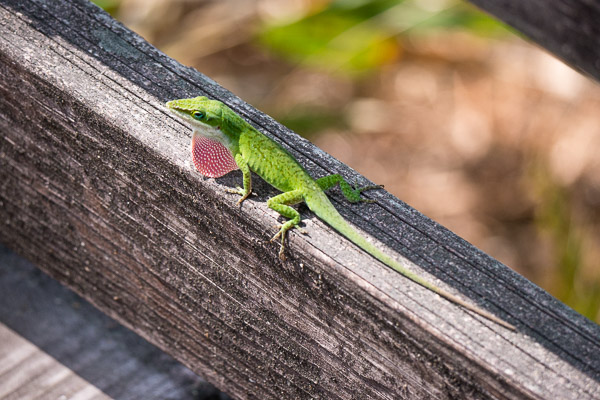
The second site was much larger, the Splinter Hill Bog Preserve (owned by the Nature Conservancy). There appeared to be several acres of last year’s Pitcher Plants with a few leaves and flowers beginning to emerge. It should be spectacular in a few weeks if there is enough rain.
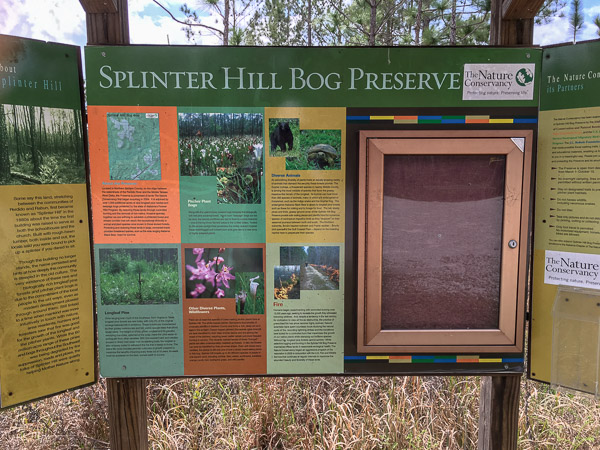
I went on a long walk into a large tract of Longleaf Pine uplands and was rewarded by several unexpected sightings. After a short boardwalk I saw my first Butterwort (another carnivorous genus)!
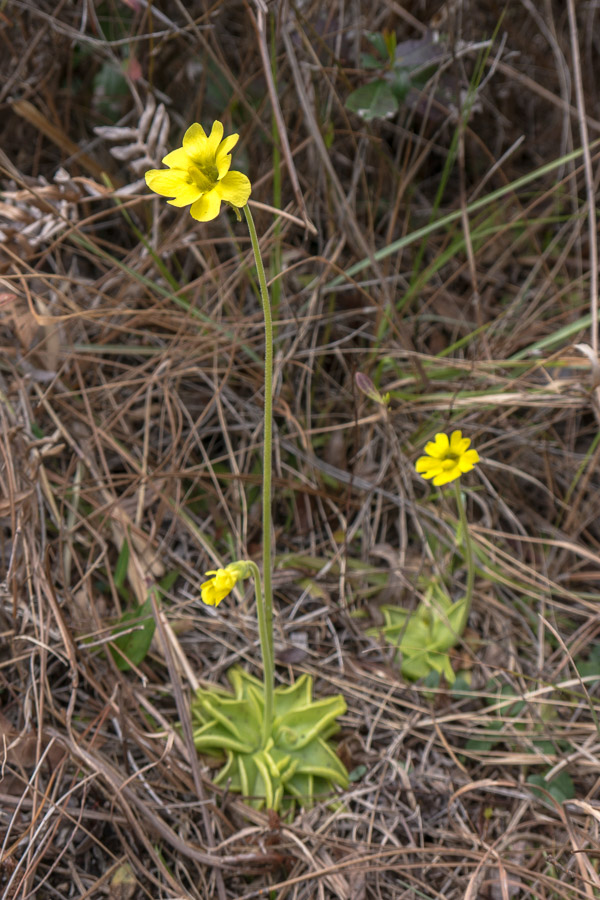
Then something even more surprising, peeking out of the straw along the trail were several miniature Blue Irises?! It turns out these are Dwarf Woodland Irises. The ground was not obviously wet and I was climbing a gentle hillside. Wow! I did not see that coming…
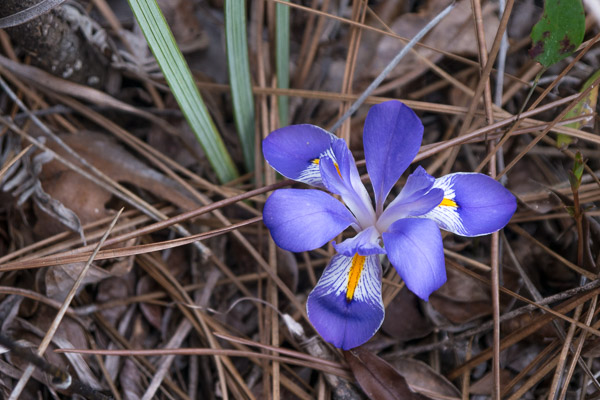
I had planned to camp at Wright Lake in the Apalachicola National Forest but it remains closed after last year’s hurricanes. So I stayed in a motel and headed down there on my third morning not knowing what to expect. I was amply rewarded with the best showing of the entire trip!
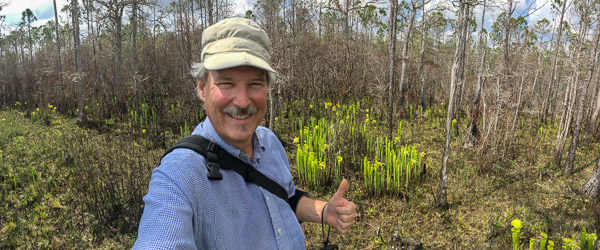
About four miles north of the little town of Sumatra I noticed a large, recently burned area with many large yellow blooms of Trumpet-Leaf Pitcher Plants. I parked and started walking over the slightly wet uneven ground. I was not disappointed. In addition to the large pitchers there were Purple Flower Pitcher Plants, and what I think were last year’s Parrot Pitcher Plants (not yet emerging this year). There were also Orchids in abundance, at least two species of Butterwort and Sundews everywhere! A True Motherlode!!
